Related Posts
Design & Ideas
Grout Colours and Their Impact: The Complete Guide to How They Shape Your Space
Halima Bapu
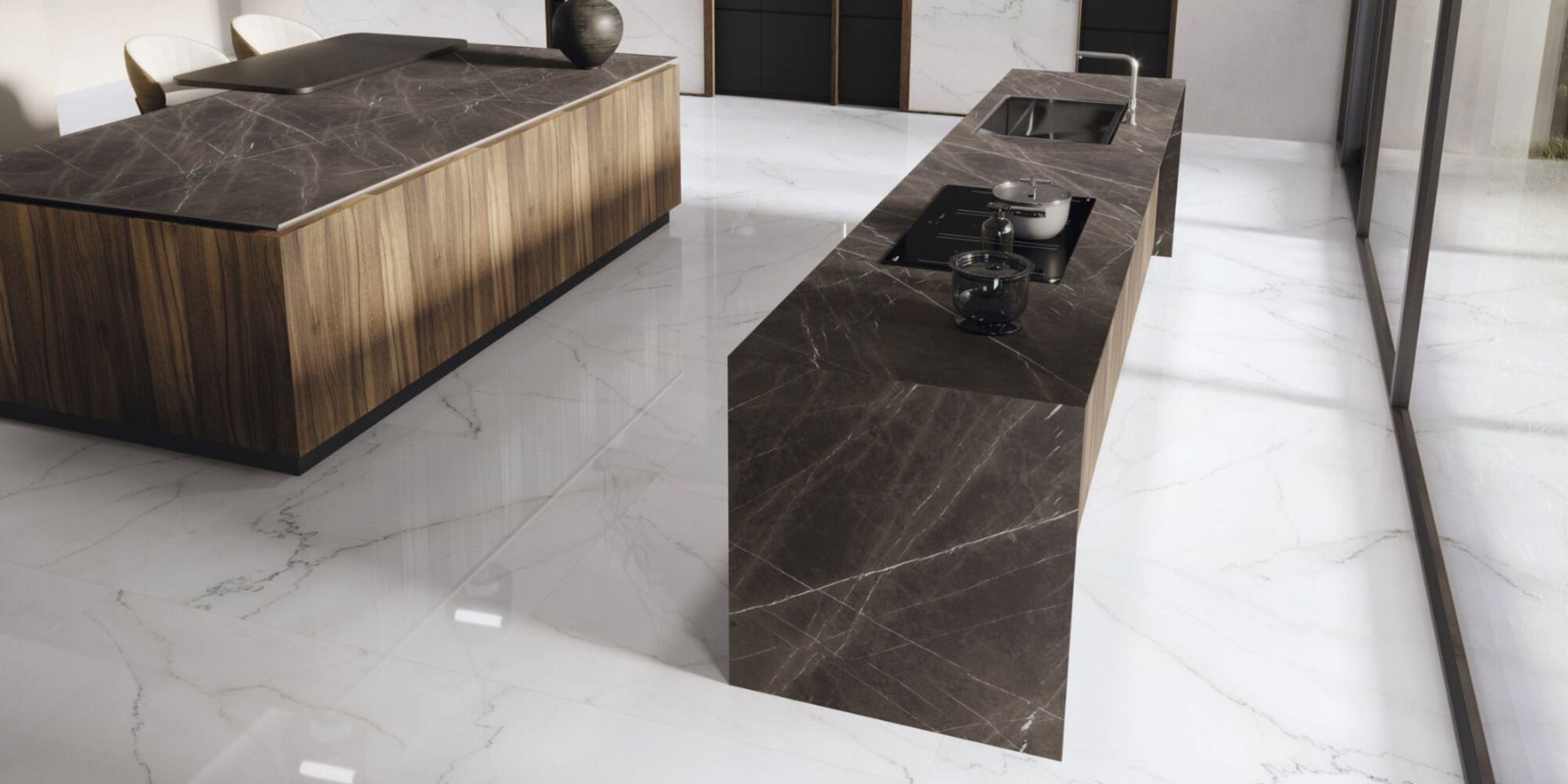
Written by: Halima Bapu
Designing a new kitchen is more than just choosing cabinetry and appliances; your flooring sets the foundation for your entire space. Selecting the right kitchen floor tiles blends practicality with style, supporting both everyday use and your overall design vision.
Before making your selection, it's important to understand the key factors that influence your choice of kitchen floor tiles, such as durability, maintenance, slip resistance, and how the tiles complement your kitchen’s overall look.
At ROCCIA, we understand that with so many materials, colours, and finishes available, the choice can feel overwhelming. That’s why this guide explores the critical considerations to help you make an informed decision when choosing kitchen floor tiles, ensuring your choice not only enhances your kitchen’s aesthetic but also stands up to the demands of daily life.
The physical size of your kitchen is a fundamental starting point when selecting floor tiles. In smaller kitchens, opting for light coloured tiles such as soft greys, pale beiges, or cool whites, can create the illusion of more space. These colours reflect natural light and visually open up the room.
Interestingly, large-format tiles in a small kitchen can also reduce visual clutter. By minimising grout lines, large tiles contribute to a more expansive, continuous floor space.
In contrast, expansive kitchens provide the freedom to play with darker tones and bolder tile styles, including bolder colours that can make a dramatic statement in expansive kitchens. Deep greys, anthracites, or textured natural stone effect tiles work well in larger spaces, adding warmth and sophistication. Large kitchens also accommodate creative tiling patterns, such as herringbone or staggered layouts, enhancing the architectural impact of your floor.
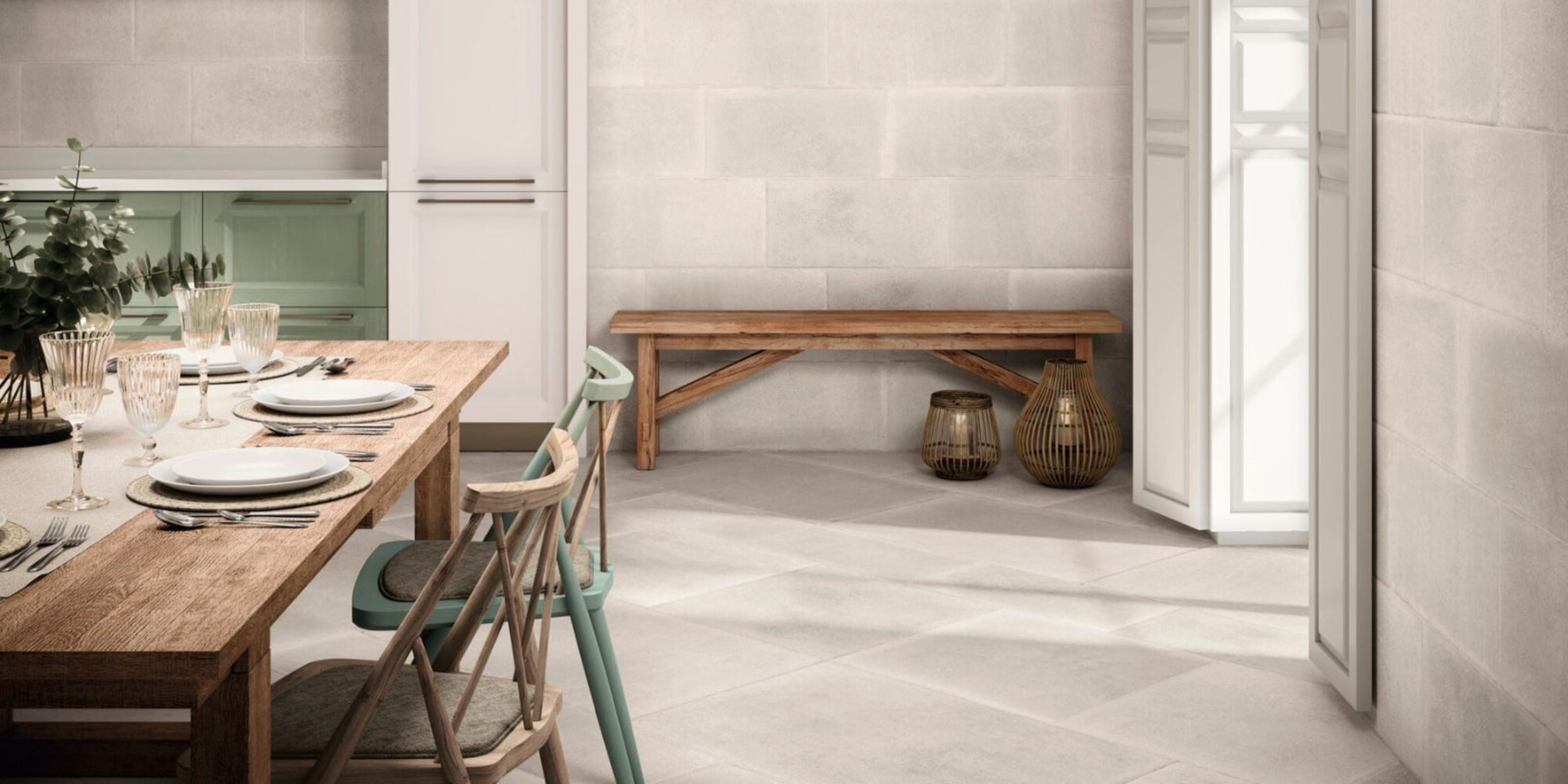
The proportions of your kitchen floor tiles can dramatically influence the look and feel of your space. Choosing the right tile size and shape isn’t just about aesthetics—it’s about creating a harmonious environment that feels balanced and functional. Larger tiles can make a kitchen appear more open and streamlined by reducing the number of grout lines, while smaller tiles can introduce texture and intricate detail, perfect for adding character to your kitchen floor.
When selecting the ideal tile size for your kitchen, consider the room’s dimensions, the amount of natural light, and how you use the space. In compact kitchens, larger porcelain tiles or ceramic tiles can help create a seamless, expansive look, making the area feel less cluttered. These larger tiles minimize grout lines, enhancing the sense of continuity across the floor.
For more spacious kitchens, smaller square tiles or even rectangular tiles can add warmth and a sense of intimacy. Rectangular tiles, when laid lengthwise, can elongate a room, while square tiles can make a wide kitchen feel more balanced. The choice between porcelain tiles and ceramic tiles often comes down to durability and style preferences, but both offer a range of sizes to suit any kitchen space.
Tile shapes offer endless opportunities to express your personal style and elevate your kitchen’s design. Mosaic tiles, for example, are perfect for creating intricate patterns or feature areas, adding a bespoke touch to your kitchen floor or splashback. Glass tiles in unique shapes can introduce a sense of luxury and reflect light beautifully, making your kitchen feel brighter and more inviting.
Subway-shaped porcelain tiles remain a timeless choice, ideal for both classic and contemporary kitchens. For those seeking something truly distinctive, consider combining different tile shapes or arranging them in creative layouts—think herringbone, chevron, or basketweave patterns. These design choices can transform your kitchen into a visually dynamic space that feels uniquely yours.
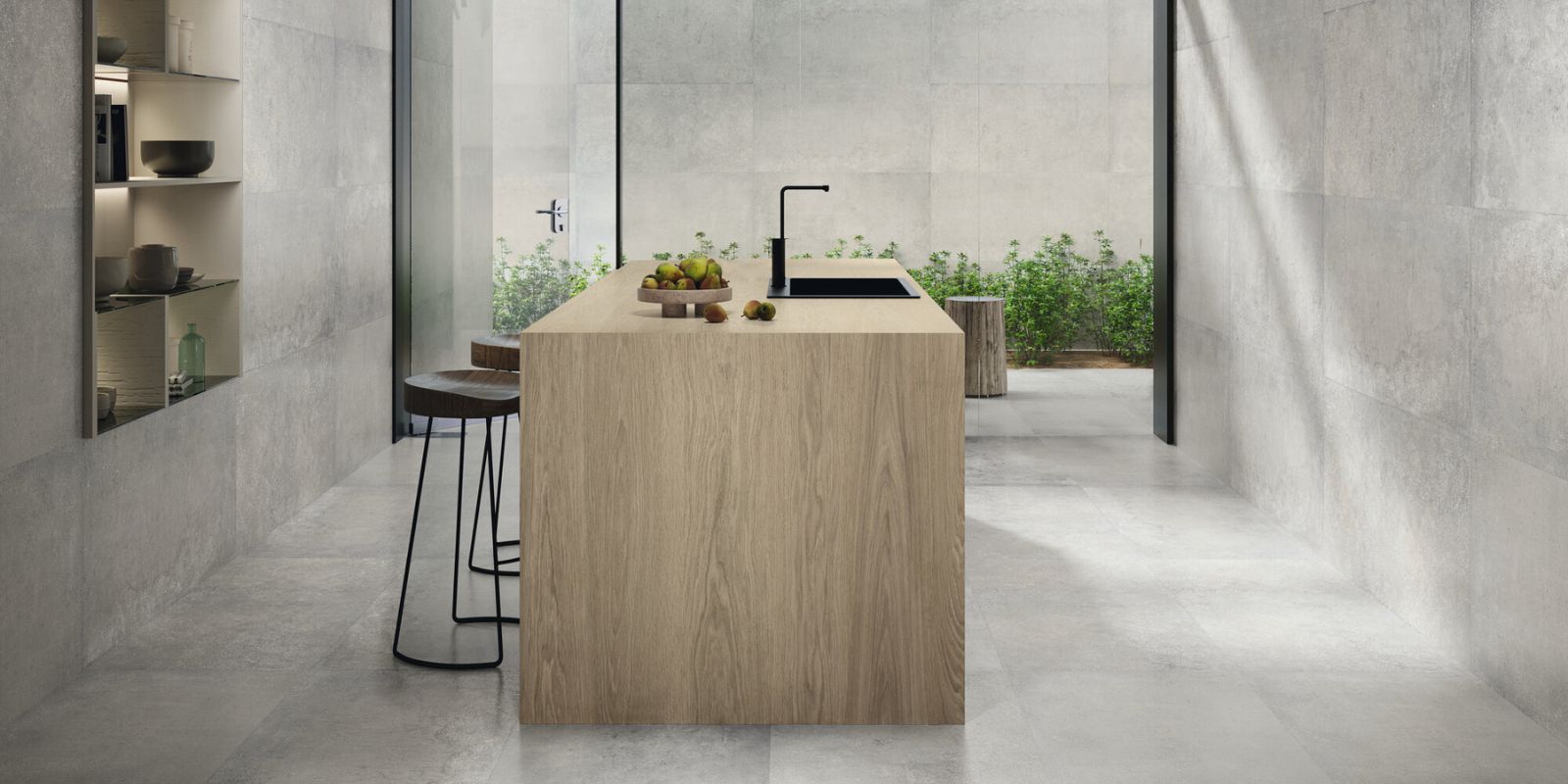
A porcelain tile is arguably the best all-rounder for kitchen floors. Manufactured under high pressure, porcelain tile is dense, water-resistant, and available in various finishes, from high-gloss to subtle matte. Porcelain mimics everything from wood and stone to concrete, offering design flexibility while maintaining strength and easy maintenance.
Slightly softer than porcelain, ceramic tiles remain a popular choice for kitchens. A ceramic tile offers versatility and style at an affordable price point. Ceramic tiles offer an extensive variety of colours and patterns, and while they’re more affordable, they are best suited to kitchens with moderate foot traffic due to slightly lower durability compared to porcelain.
For homeowners who love the texture and warmth of natural stone but prefer easier maintenance, stone-effect porcelain tiles provide the ideal solution. Whether replicating slate, marble, or limestone, these tiles offer the authenticity of stone with the practicality of porcelain and are virtually indistinguishable from the real thing thanks to advanced manufacturing techniques: scratch-resistant, non-porous, and low-maintenance.
Natural stone effect tiles are popular in porcelain which is more durable and water resistant which makes it ideal for a kitchen with a lot of foot traffic. Giving your home a great look without compromising practicality.
Glass tiles are a fantastic way to infuse your kitchen with light and a touch of luxury. Available in a wide array of shapes, sizes, and vibrant colours, glass tiles can be used to create everything from sleek, modern backsplashes to elegant accent walls. Their reflective surface helps bounce light around the room, making even the smallest kitchens feel more spacious and airy.
Beyond their visual appeal, glass tiles are also highly practical for busy households. They’re easy to clean, resistant to stains, and maintain their shine with minimal effort. Whether you opt for a subtle glass mosaic or bold, coloured glass tiles, incorporating glass into your kitchen design can elevate the overall style and functionality of your space.
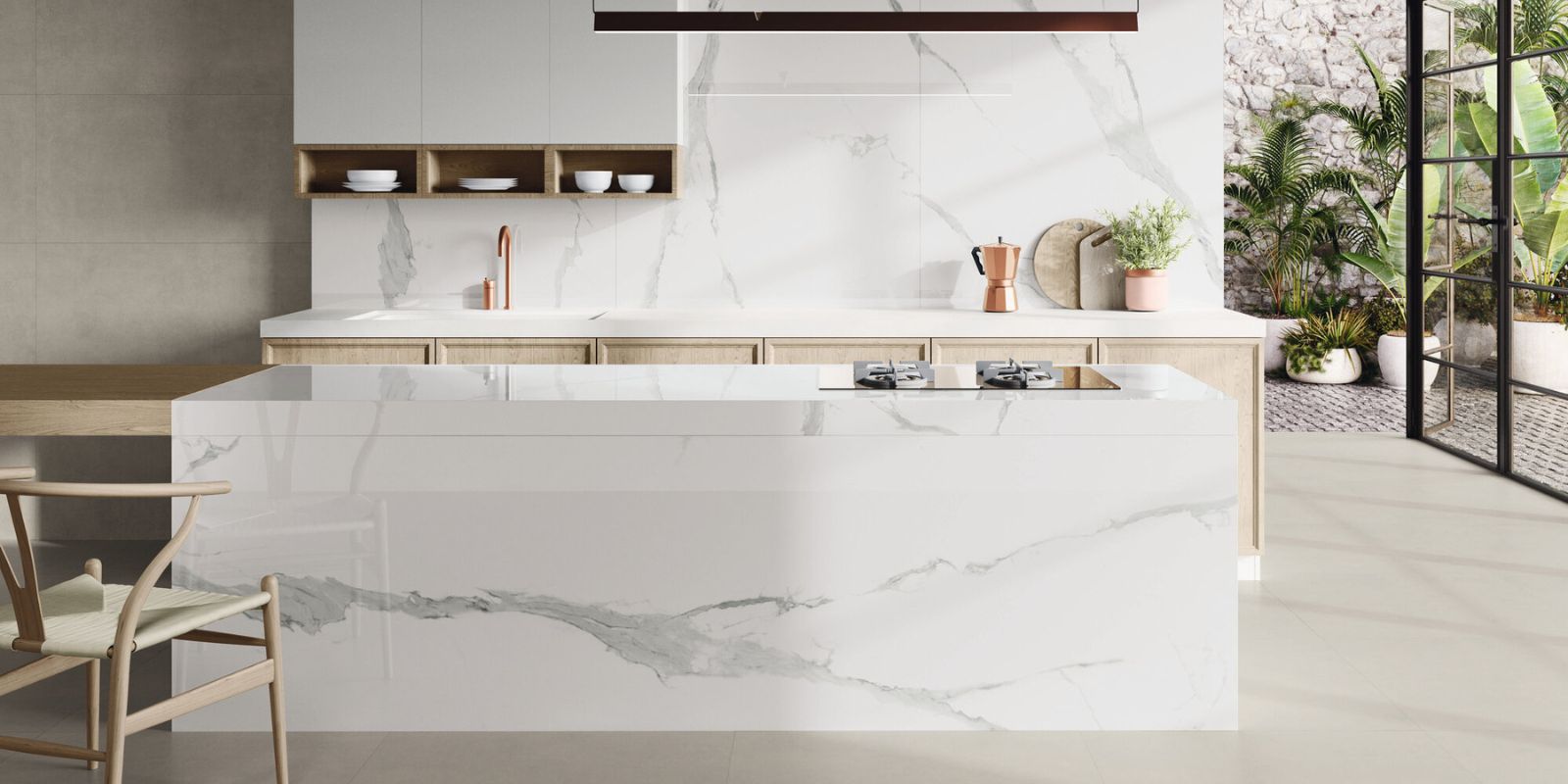
A busy kitchen sees frequent spills, and safety is key. While polished tiles create a sleek look, they can be slippery, especially when wet. If you favour glossy finishes, look for options with anti-slip properties.
Matte or lightly textured tiles provide greater slip resistance and are ideal for family homes or kitchens used by elderly individuals. A slightly grainy surface can improve grip without sacrificing aesthetics.
Slip resistance is measured by specific ratings such as the R-rating (from R9 to R13), which indicates the level of slip resistance a tile offers. For kitchen floors, especially in homes with children or elderly residents, selecting tiles with a minimum R10 rating is advisable to reduce the risk of slips and falls.
In addition to surface texture, consider the grout lines between tiles as they can also contribute to slip resistance. Narrow grout lines create a smoother surface but may be more slippery, whereas wider grout lines with textured grout can add traction.
When maintaining slip-resistant tiles, regular cleaning with a mild cleaner is important to prevent the buildup of grease or dirt, which can reduce their effectiveness. Using a damp mop is recommended to effectively remove spills and maintain the tile’s slip resistance. Avoid using harsh chemicals or wax-based products that may leave a slippery residue.
Ultimately, balancing aesthetics with safety will ensure your kitchen floor remains both beautiful and functional, providing peace of mind for your household.
The style of your kitchen plays a significant role in tile selection:
Your floor tiles should work cohesively with other elements, including cabinetry, countertops, and wall tiles. Whether you choose contrast or complement, ensure your tiles support the overall colour scheme and visual tone of your kitchen. Thoughtful coordination of colours, textures, and finishes can create a harmonious and inviting space that feels well-designed and balanced. Consider how your chosen tiles will interact with lighting and other materials to enhance the kitchen’s ambiance and flow.
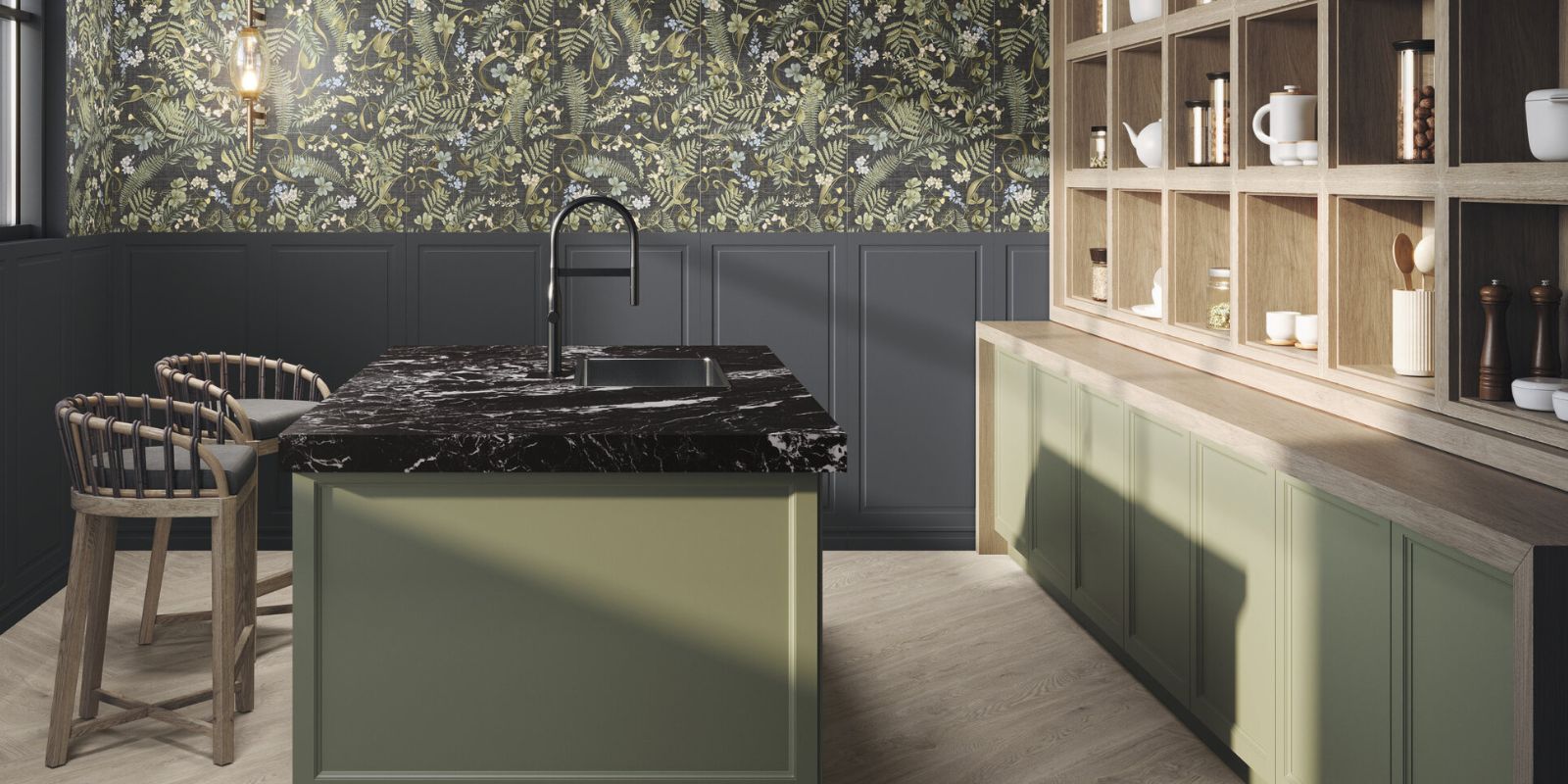
In a high-traffic area like the kitchen, ease of cleaning is essential. Porcelain and ceramic tiles require only simple mopping and occasional grout cleaning, making them highly practical choices for busy households. Natural stone, however, may demand periodic sealing and the use of specialist cleaning products to preserve its appearance and prevent staining.
When choosing grout, consider:
Grout also contributes significantly to the overall aesthetic, with coloured grout allowing you to either blend with your tiles for a subtle effect or highlight tile patterns to create a striking visual impact. Selecting the right grout colour and type is an important part of achieving the perfect finish for your kitchen floor.
The colour of your floor tiles subtly influences the atmosphere of your kitchen. Pale, cool tones encourage a clean, airy aesthetic, while darker shades ground the space and introduce depth.
Neutral tones like greys, taupes, and creams remain timeless and adaptable, pairing easily with changing wall colours and accessories. However, introducing bold tile colours, navy blues, forest greens, or terracottas, can create a standout feature and reflect your personality.
Incorporating patterned tiles or creative layouts such as chevron or herringbone can transform your kitchen into a design statement. Even subtle patterns, like wood grain effects, can introduce visual texture and prevent the space from feeling flat.
Mon-Fri, 9am-5pm
01772 595995
Roccia Design Centre, Preston,
PR1 4HH
01772 258998
Roccia Tiles & Bathrooms, Bolton, BL1 4JL
01204 846111
| Description |
| Price |
| Vendor |
| Type |
| Product variants |
Delivery is on us when you order over £500
